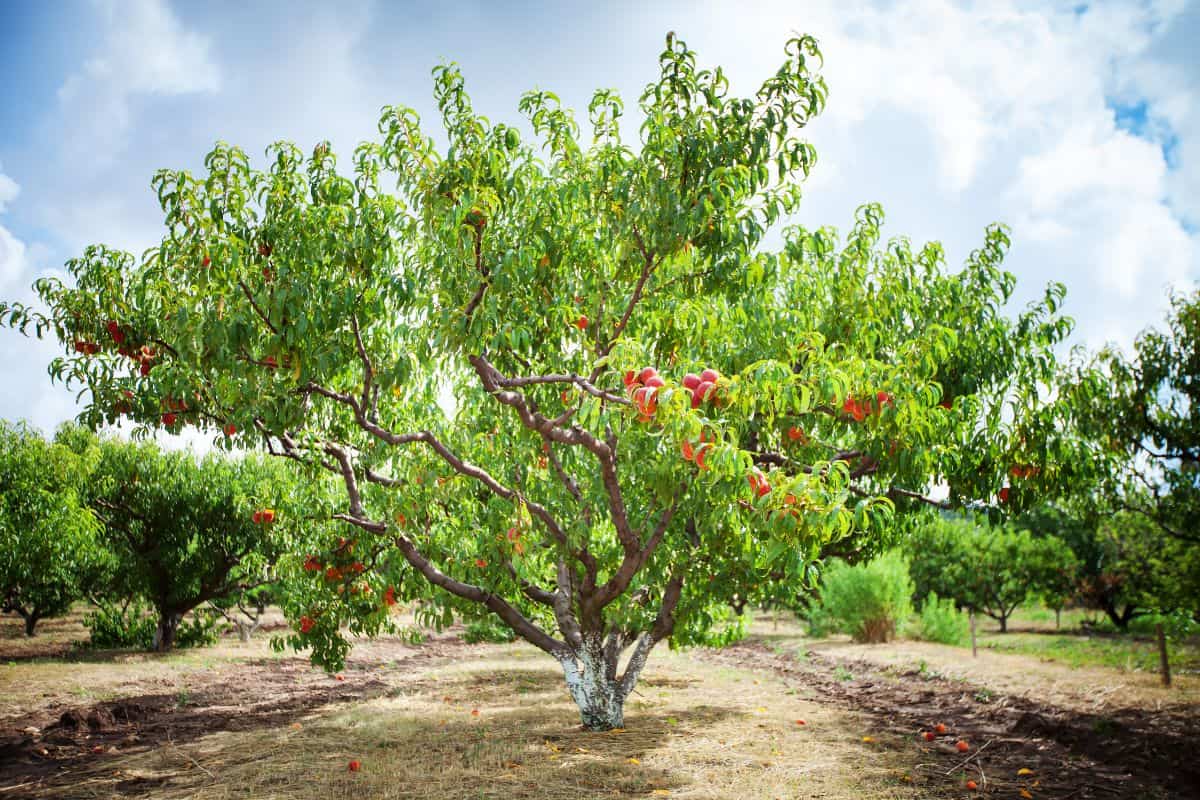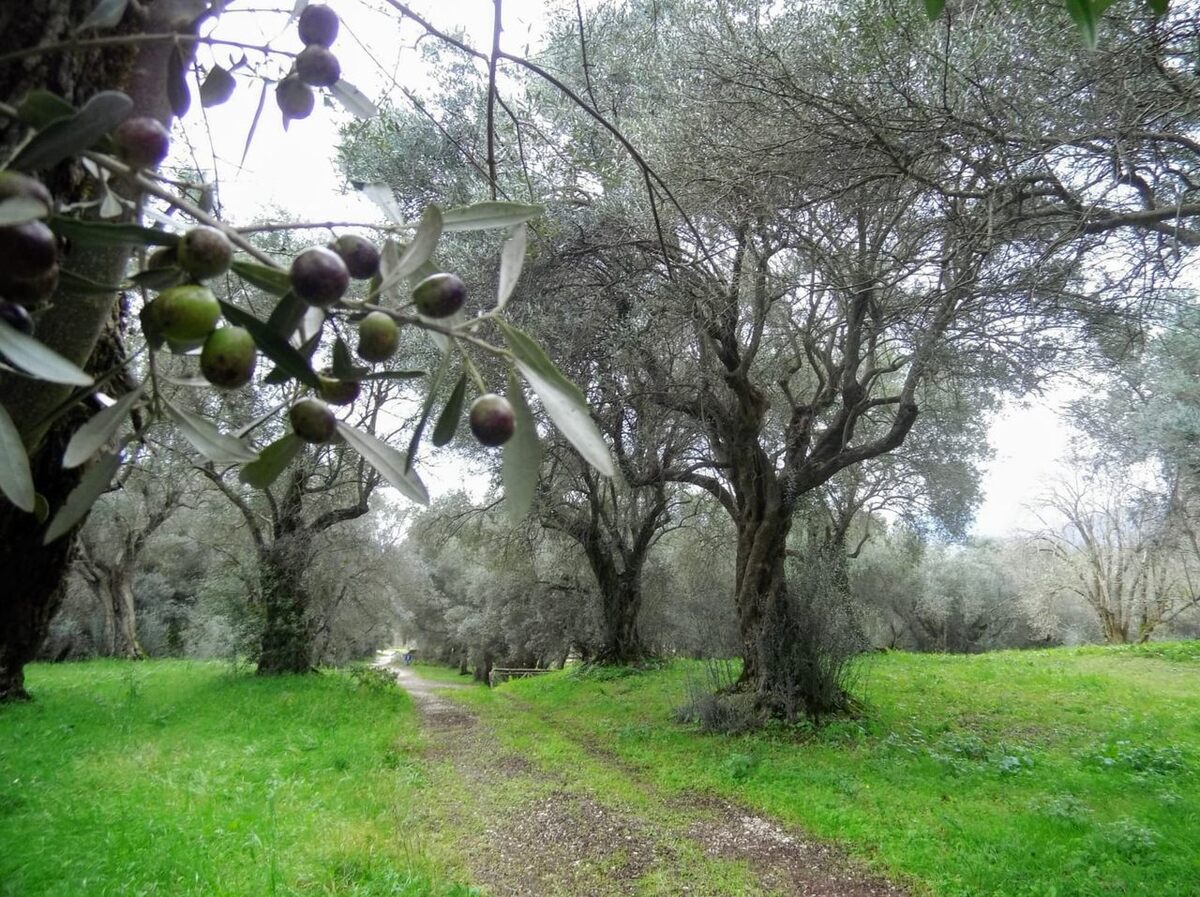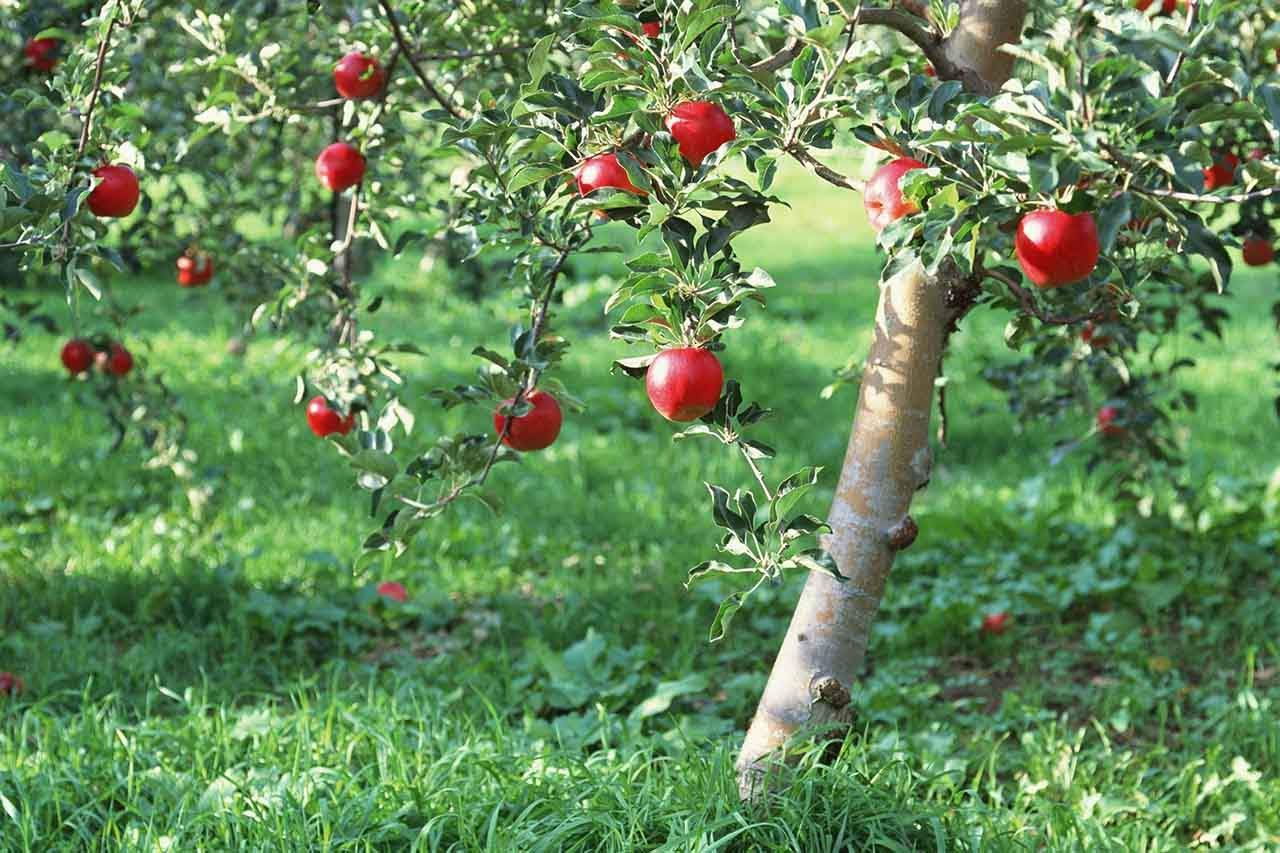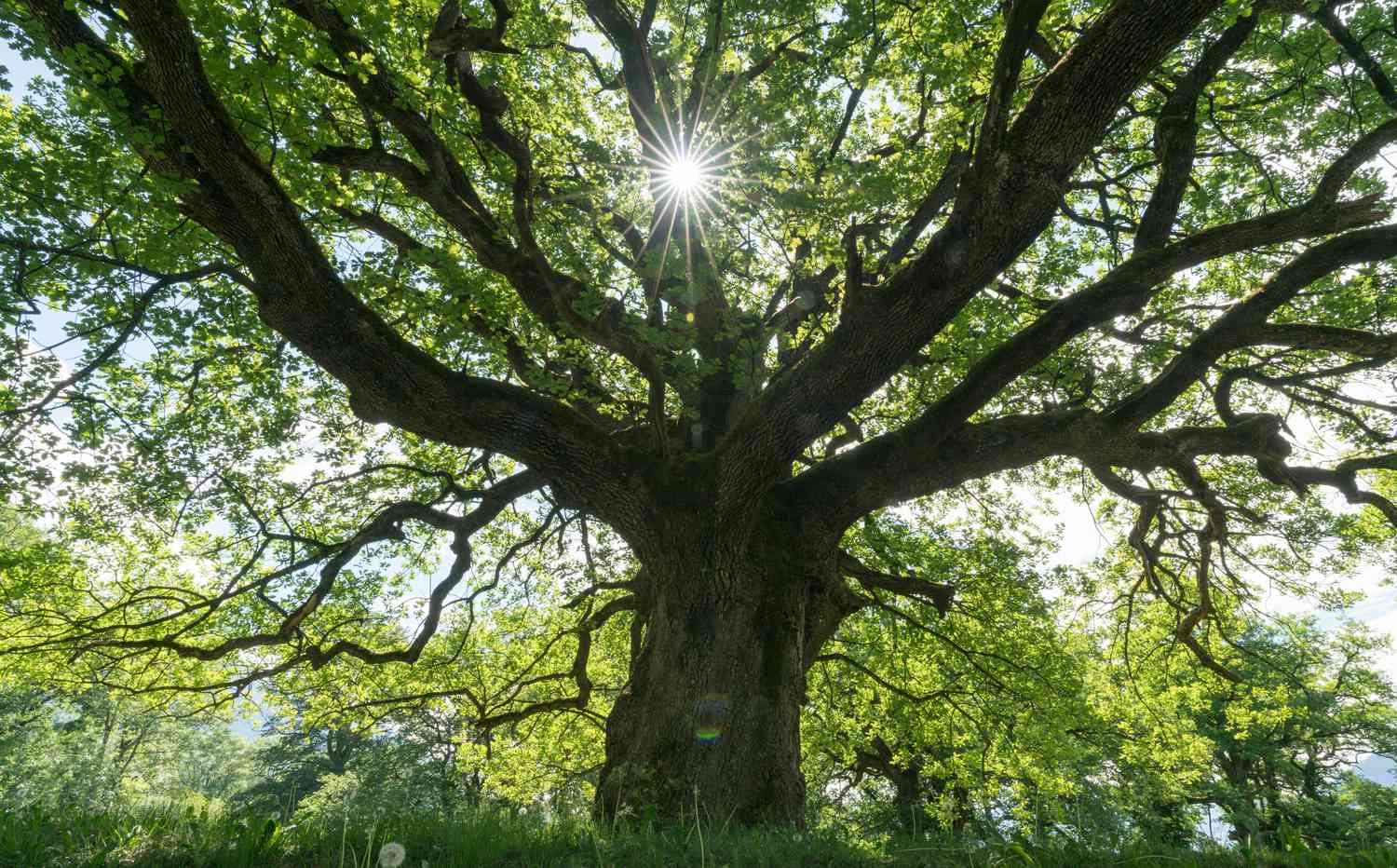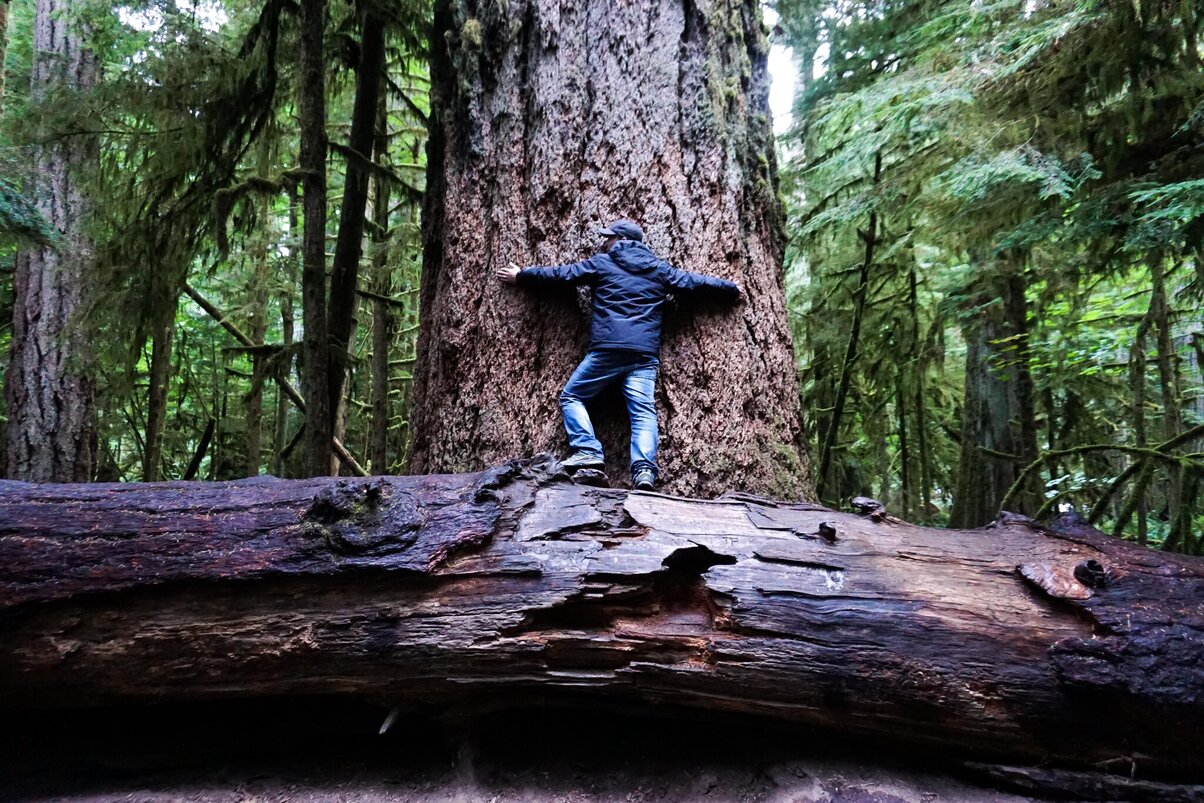Home>Gardening Tips and Tricks>Eco-Friendly Gardening>How Do Trees Act As Carbon Sinks?


Eco-Friendly Gardening
How Do Trees Act As Carbon Sinks?
Modified: January 22, 2024
Learn how trees act as carbon sinks and contribute to eco-friendly gardening practices. Explore the benefits of planting and maintaining trees for a sustainable environment.
(Many of the links in this article redirect to a specific reviewed product. Your purchase of these products through affiliate links helps to generate commission for Chicagolandgardening.com, at no extra cost. Learn more)
Table of Contents
Introduction
Welcome to the world of eco-friendly gardening! One of the key aspects of sustainable gardening is understanding the importance of carbon sinks. In simple terms, a carbon sink is a natural or man-made reservoir that absorbs and stores carbon dioxide from the atmosphere, helping to mitigate climate change. In this article, we will explore how trees act as vital carbon sinks and their role in promoting a healthier and greener planet.
Trees are not just beautiful additions to our landscapes – they play a crucial role in maintaining the Earth’s delicate balance. As we continue to grapple with the effects of climate change, it has become increasingly important to understand how trees can help offset carbon emissions and contribute to a more sustainable future.
By the end of this article, you will gain a deeper understanding of how trees sequester carbon, what factors influence their carbon storage capacity, and the significance of forests in mitigating climate change. Let’s dive into the fascinating world of trees and discover their incredible ability to act as powerful carbon sinks!
Definition of Carbon Sinks
Before we delve into the specifics of trees as carbon sinks, let’s first define what a carbon sink actually is. In the context of climate change, a carbon sink is a natural or artificial reservoir that absorbs and stores carbon dioxide (CO2) from the atmosphere, effectively reducing the amount of greenhouse gases in the air.
Carbon sinks play a crucial role in mitigating climate change by removing carbon dioxide, a major contributor to global warming and climate instability, from the atmosphere. These sinks can be found in various forms, such as oceans, forests, wetlands, and even man-made structures like carbon capture and storage (CCS) facilities.
Natural carbon sinks, like trees and vegetation, act as “biological pumps” that absorb or “sequester” carbon dioxide through photosynthesis. During photosynthesis, plants use the energy from sunlight to convert carbon dioxide and water into oxygen and glucose, releasing oxygen back into the atmosphere and storing carbon in biomass like leaves, stems, and roots.
It is important to note that carbon sinks do not permanently remove carbon dioxide from the atmosphere. Instead, they act as temporary reservoirs with some sinks, such as forests, storing carbon for long periods while others, like oceans, cycling carbon in a shorter timeframe.
Overall, carbon sinks are a crucial component of the Earth’s natural carbon cycle. They help regulate the amount of carbon dioxide in the atmosphere, providing a natural mechanism to combat the ongoing increase in greenhouse gas emissions.
Now that we understand the general concept of carbon sinks, let’s explore how trees specifically serve as natural carbon sinks and play a significant role in capturing and storing carbon dioxide.
Trees as Natural Carbon Sinks
Trees are one of the most effective and vital natural carbon sinks on the planet. Through a process known as carbon sequestration, trees absorb carbon dioxide from the atmosphere and store it in their trunks, branches, leaves, and roots. This process helps to reduce the levels of greenhouse gases responsible for climate change.
One of the key factors that make trees such efficient carbon sinks is their ability to harness the power of photosynthesis. During this process, trees utilize sunlight, water, and carbon dioxide to produce oxygen and glucose. The oxygen is released back into the atmosphere, while the glucose is stored as cellulose in the tree’s structure.
In addition to direct carbon storage, trees indirectly contribute to carbon sequestration through their partnerships with beneficial fungi called mycorrhizae. These fungi form a symbiotic relationship with tree roots, enhancing the tree’s ability to absorb nutrients, water, and carbon compounds from the soil.
The effectiveness of trees as carbon sinks varies based on their species, age, and size. Generally, older and larger trees have a greater capacity to absorb and store carbon dioxide. This is because they have a larger biomass and more extensive root systems, allowing for increased carbon uptake.
While all trees contribute to carbon sequestration, certain tree species have higher carbon sequestration rates than others. For example, fast-growing trees such as poplar and willow have a higher capacity to absorb carbon dioxide due to their rapid metabolism and larger leaf surface areas.
Furthermore, forests play a significant role in carbon sequestration, as they consist of numerous trees working collectively to remove carbon dioxide from the atmosphere. Forests serve as interconnected networks, sharing resources and providing a greater capacity for carbon storage than individual trees.
It is worth noting that the efficiency of trees as carbon sinks can be influenced by external factors such as climate, soil conditions, and human activities. For example, deforestation and land clearance significantly reduce the number of trees available to capture carbon dioxide, leading to increased greenhouse gas emissions.
In the next section, we will discuss in more detail the process of carbon sequestration in trees and the factors that impact their ability to store carbon dioxide.
Process of Carbon Sequestration in Trees
The process of carbon sequestration in trees involves the uptake and storage of carbon dioxide from the atmosphere. This mechanism plays a crucial role in reducing greenhouse gas emissions and combating climate change. Understanding the process of carbon sequestration can help us appreciate the role of trees as effective natural carbon sinks.
Carbon sequestration in trees begins with the process of photosynthesis. Trees use their leaves to capture sunlight, which provides the energy needed for photosynthesis to take place. During photosynthesis, carbon dioxide from the air, water from the ground, and energy from the sunlight are converted into glucose and oxygen.
The glucose, produced during photosynthesis, serves as the building block for the tree’s growth and development. Some of the glucose is used immediately for energy, but a significant portion is stored as starch in various parts of the tree, including the leaves, branches, trunk, and roots.
The stored glucose and starch in the tree’s biomass act as a reservoir for carbon dioxide. Through a process known as carbon fixation, the carbon dioxide molecules are bound and stored in the tree’s structure, effectively sequestering them from the atmosphere. This carbon storage process helps to reduce the levels of greenhouse gases in the air.
In addition to the direct carbon storage in their biomass, trees also contribute to carbon sequestration through the enhancement of soil carbon storage. When leaves, branches, and other organic matter from trees fall to the ground, they decompose and add organic carbon to the soil. This process increases the soil’s carbon content, promoting long-term carbon storage.
The ability of trees to sequester carbon dioxide varies depending on factors such as tree species, age, and size. Younger trees have a higher carbon sequestration rate compared to older trees, as they are actively growing and allocating more resources to biomass accumulation.
Mature trees, on the other hand, may have a slower rate of carbon sequestration but can store larger amounts of carbon due to their larger size and biomass. These trees continue to sequester carbon dioxide, albeit at a slower pace, throughout their lifespan.
Furthermore, certain tree species have higher carbon sequestration rates than others. For example, species with denser wood, such as oak or mahogany, tend to store more carbon in their biomass compared to softer wood species like pine or eucalyptus.
The process of carbon sequestration in trees not only helps to mitigate climate change but also provides additional environmental benefits. Trees contribute to improving air quality by absorbing other air pollutants and releasing oxygen. They also help in conserving water resources, reducing soil erosion, and providing habitat for wildlife.
In the next section, we will discuss the factors that can influence the capacity of trees to sequester carbon dioxide.
Factors Affecting Tree Carbon Sequestration
While trees are known for their ability to sequester carbon dioxide and act as natural carbon sinks, several factors can influence their capacity to store carbon. Understanding these factors is essential for optimizing the potential of trees as effective tools for mitigating climate change.
1. Tree Species: Different tree species have varying abilities to sequester carbon. Some species, like oak or maple, have a higher carbon storage capacity due to their dense wood and long lifespans. Choosing tree species with higher carbon sequestration rates can maximize the carbon storage potential.
2. Age and Size: As trees age and increase in size, their carbon sequestration capacity typically increases. Older and larger trees have larger biomass and more extensive root systems, allowing them to absorb and store more carbon dioxide. However, younger and fast-growing trees can sequester carbon at a higher rate due to their rapid growth and metabolism.
3. Environmental Conditions: Environmental factors such as sunlight, temperature, and rainfall can influence the growth and carbon sequestration of trees. Trees in areas with ample sunlight and water availability tend to have higher carbon sequestration rates compared to those in more challenging environments.
4. Soil Quality: The quality of the soil in which trees grow affects their ability to sequester carbon. Healthy soils rich in organic matter provide optimal conditions for tree growth and carbon storage. Soils with good drainage and nutrient availability can promote higher carbon sequestration rates.
5. Management Practices: The way trees are managed can impact their carbon sequestration ability. Regular pruning, proper fertilization, and maintenance of overall tree health can enhance their growth and carbon storage potential. On the other hand, improper management practices, such as excessive tree removal or disturbance of root systems, can have negative effects on carbon sequestration.
6. Atmospheric CO2 Levels: The concentration of carbon dioxide in the atmosphere directly affects the rate at which trees can sequester carbon. Higher levels of atmospheric CO2 can potentially stimulate tree growth and, consequently, increase carbon sequestration rates. However, this response can vary among tree species and ecosystems.
7. Land Use Changes: Alterations in land use, such as deforestation or land conversion for agriculture or urban development, can significantly impact tree carbon sequestration. Conversion of forested areas into other land uses reduces the number of trees available to sequester carbon, leading to increased greenhouse gas emissions.
8. Forest Management Practices: Forest management strategies, such as reforestation and afforestation initiatives, play a vital role in promoting tree carbon sequestration. Planting new trees or restoring degraded forests can enhance the capacity for carbon storage and contribute to the overall mitigation of climate change.
By considering and addressing these factors, we can optimize the potential of trees to act as effective carbon sinks and combat climate change on a larger scale.
Importance of Trees as Carbon Sinks
Trees play a crucial role as carbon sinks, providing numerous environmental, social, and economic benefits. Understanding the importance of trees in carbon sequestration is key to implementing effective strategies for mitigating climate change and promoting a sustainable future.
1. Carbon Mitigation: Trees are highly effective at absorbing carbon dioxide and storing it in their biomass. By sequestering carbon, trees help to reduce the amount of this greenhouse gas in the atmosphere, mitigating the impacts of climate change. Trees act as a natural solution to offset carbon emissions and contribute to a more stable climate.
2. Cleaner Air: In addition to sequestering carbon dioxide, trees absorb other air pollutants such as nitrogen oxides, sulfur dioxide, and particulate matter. By purifying the air, trees help to improve air quality, leading to better respiratory health and overall well-being for humans and other living organisms.
3. Biodiversity Conservation: Forests, with their multitude of trees, provide a habitat for a diverse array of plant and animal species. By preserving and expanding forested areas, we create safe havens for biodiversity. Many species rely on trees for food, shelter, and reproduction, and the conservation of these ecosystems is crucial for maintaining global biodiversity.
4. Watershed Protection: Trees act as natural water filters, preventing soil erosion and reducing the runoff of pollutants into water bodies. Their root systems anchor the soil, helping to maintain stable water levels and preventing floods. Trees also play a role in replenishing groundwater supplies, maintaining stream flows, and regulating water temperature.
5. Community Well-being: Trees have a positive impact on human well-being and quality of life. Green spaces with trees provide shade, lower temperatures, and create a calming and aesthetically pleasing environment. Access to nature and green spaces has been linked to reduced stress levels, improved mental health, and enhanced overall community well-being.
6. Economic Benefits: Forests and trees contribute to local economies through various means. They serve as a source of timber, non-timber forest products, and medicinal plants, which can generate income and employment opportunities. Additionally, forests attract tourism and recreational activities, offering economic benefits to surrounding communities.
7. Climate Change Adaptation: Trees help in climate change adaptation by providing shade and reducing the urban heat island effect. Urban areas with ample tree cover experience lower temperatures, reduced energy consumption for cooling, and improved air quality. Trees also act as windbreaks, protecting against strong winds and reducing the risk of soil erosion.
8. Sustainable Furniture and Construction Materials: Trees yield valuable wood resources that can be used for sustainable furniture, construction materials, and renewable energy sources. Utilizing wood products derived from responsibly managed forests reduces the reliance on energy-intensive, non-renewable materials, contributing to a more sustainable future.
The importance of trees as carbon sinks extends far beyond their immediate environmental benefits. By recognizing and harnessing their potential, we can work towards mitigating climate change, preserving biodiversity, and creating a more sustainable and resilient planet for future generations.
Role of Forests in Mitigating Climate Change
Forests play a critical role in the global effort to mitigate climate change. As vast and complex ecosystems, forests offer a multitude of benefits and services that contribute to the reduction of greenhouse gas emissions and the stabilization of our climate system.
1. Carbon Sequestration: Forests are unparalleled in their ability to sequester carbon dioxide from the atmosphere. Through the process of photosynthesis, trees absorb carbon dioxide and store it in their biomass, effectively acting as massive carbon sinks. Forests are estimated to store roughly 80% of above-ground terrestrial carbon, making them a key asset in regulating the global carbon cycle.
2. Deforestation Prevention: Forests serve as a natural defense against deforestation, one of the major contributors to greenhouse gas emissions. By preserving existing forests and preventing further deforestation, we can safeguard the carbon stocks contained within these ecosystems. Forest conservation efforts help to maintain carbon sinks and prevent the release of stored carbon into the atmosphere.
3. Ecosystem Resilience: Forests enhance ecosystem resilience by providing habitats for a diverse range of plant and animal species. Biodiversity is crucial for ecosystem stability and resilience in the face of climate change. Forests support intricate food chains and symbiotic relationships, allowing for the adaptation and survival of species in changing environmental conditions.
4. Water Cycle Regulation: Forests play a vital role in regulating the water cycle, which has significant implications for climate stability. Trees absorb water from the ground and release it into the atmosphere through transpiration. This process contributes to the formation of clouds and precipitation, ultimately influencing regional and global rainfall patterns. By maintaining the water cycle, forests contribute to climate regulation and reduce the risk of droughts and floods.
5. Soil Conservation: Forests help preserve soil integrity and prevent erosion, which is particularly significant in mitigating climate change. Healthy soils store significant amounts of carbon, and preventing soil erosion ensures that this carbon remains sequestered. Additionally, intact forest ecosystems promote nutrient cycling and soil fertility, facilitating the growth of trees and other vegetation.
6. Albedo Effect: Forests have a crucial impact on the Earth’s energy balance through the albedo effect. The dark canopy of trees absorbs less sunlight and reflects less heat compared to open, lighter surfaces such as bare ground. This leads to a cooling effect, moderating local and regional temperatures. By reducing surface temperatures, forests help mitigate the urban heat island effect and alleviate the impacts of heatwaves.
7. Sustainable Resource Management: Forests offer renewable resources such as timber, non-timber forest products, and bioenergy. By promoting sustainable forest management practices, we can ensure the responsible use of forest resources, minimizing the carbon emissions associated with unsustainable practices. Sustainable forestry can also contribute to the transition to a low-carbon economy by providing alternatives to fossil fuel-based materials.
8. Climate Adaptation: Forests contribute to climate change adaptation by providing natural buffers against extreme weather events. They act as windbreaks, reducing the impact of strong winds and blocking coastal erosion. Forests also provide crucial habitats for diverse species, allowing for the natural selection and adaptation of flora and fauna to changing climatic conditions.
By recognizing and harnessing the role of forests in mitigating climate change, we can work towards preserving these invaluable ecosystems, promoting sustainable practices, and ensuring a more resilient and sustainable future for our planet.
Challenges to Tree Carbon Sink Capacity
While trees act as natural carbon sinks, there are several challenges that can limit their carbon sequestration capacity. These challenges arise from various factors, including human activities, environmental changes, and ecological disturbances. Understanding these challenges is crucial for effective management and preservation of tree carbon sink capacity.
1. Deforestation and Land-Use Change: Deforestation, mainly driven by agriculture, urbanization, and logging, is a major threat to tree carbon sink capacity. When trees are cleared, the carbon stored within their biomass is released into the atmosphere as carbon dioxide, contributing to greenhouse gas emissions. To maintain and enhance tree carbon sink capacity, efforts to curb deforestation and promote sustainable land-use practices are essential.
2. Forest Degradation: Forest degradation refers to the gradual deterioration and loss of the structure and function of forests. Activities such as selective logging, illegal mining, and unsustainable infrastructure development lead to the degradation of forest ecosystems. This results in reduced biomass and carbon storage capacity, affecting the ability of trees to sequester and store carbon dioxide effectively.
3. Climate Change Impacts: Rising temperatures, altered precipitation patterns, and increased frequency of extreme weather events due to climate change pose challenges to tree carbon sink capacity. Changes in climatic conditions can affect tree growth rates, disrupt natural regeneration, increase tree mortality rates, and compromise overall forest health. These impacts can reduce the ability of trees to sequester carbon effectively.
4. Invasive Species and Diseases: Invasive species and diseases can have detrimental effects on tree health and carbon sink capacity. Non-native invasive species can outcompete native trees for resources, leading to reduced biomass and carbon storage. Additionally, diseases such as Dutch Elm Disease or Emerald Ash Borer can devastate tree populations, affecting carbon sequestration rates.
5. Fragmentation and Connectivity Loss: Fragmentation of forested landscapes due to infrastructure development and land conversion disrupts connectivity between forest patches. This isolation can limit gene flow, decrease biodiversity, and ultimately impact the ability of forests to sequester carbon effectively. Maintaining forest connectivity through protected areas and ecological corridors is crucial to preserve carbon sink capacity.
6. Soil Degradation: Soil degradation, resulting from unsustainable land management practices, deforestation, and intensive agriculture, affects the health and fertility of soils. Degraded soils have reduced organic carbon content, limiting the capacity for long-term carbon storage. Implementing soil conservation practices and sustainable land management strategies can help mitigate this challenge.
7. Land Management and Forest Fire Practices: Poor land management practices, including inadequate fire management strategies, can contribute to the loss of trees and carbon emissions. Uncontrolled forest fires release significant amounts of carbon stored in tree biomass into the atmosphere. Effective fire management practices and controlled burns can help reduce the risk of uncontrolled wildfires and minimize carbon losses.
Addressing these challenges requires a multi-pronged approach involving sustainable land-use planning, reforestation initiatives, forest conservation, and responsible forest management practices. By mitigating these challenges, we can ensure the long-term resilience and effectiveness of tree carbon sinks in combating climate change.
Conclusion
The role of trees as natural carbon sinks is essential in mitigating climate change and creating a sustainable future. Through the process of carbon sequestration, trees absorb carbon dioxide from the atmosphere and store it in their biomass, effectively reducing greenhouse gas emissions. The importance of trees as carbon sinks extends beyond their ability to sequester carbon, as they also provide numerous environmental benefits, such as cleaner air, biodiversity conservation, and watershed protection.
However, there are challenges that can limit tree carbon sink capacity, including deforestation, forest degradation, climate change impacts, invasive species, and soil degradation. Addressing these challenges requires sustainable land-use practices, forest conservation efforts, and responsible management strategies. By protecting and restoring forests, implementing reforestation initiatives, and promoting sustainable forestry practices, we can enhance the capacity of trees to sequester carbon effectively.
Forests, as interconnected networks of trees, play a significant role in the global effort to mitigate climate change. They contribute to carbon mitigation, provide ecosystem services, and support human well-being. Preserving and restoring forests is crucial for ensuring a stable climate, maintaining biodiversity, protecting water resources, and promoting sustainable resource management.
As individuals, we can contribute to the preservation of tree carbon sink capacity by supporting reforestation initiatives, choosing sustainable wood products, and advocating for responsible land-use practices. Additionally, governments, organizations, and communities must prioritize forest conservation, sustainable management, and climate change adaptation strategies to ensure the long-term resilience and effectiveness of trees as carbon sinks.
The remarkable ability of trees to act as natural carbon sinks serves as a reminder of the significance of nature-based solutions in addressing global challenges. By harnessing the potential of trees and forests, we can make a positive impact in mitigating climate change and creating a more sustainable and resilient planet for future generations.


